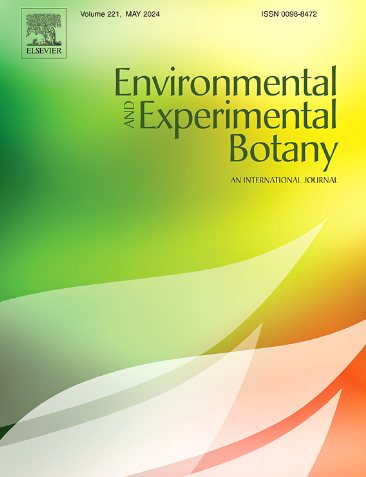不同生态环境下不同树种的干旱记忆表达存在差异
IF 4.5
2区 生物学
Q2 ENVIRONMENTAL SCIENCES
引用次数: 0
摘要
树木在其广泛的生命周期中可能表现出对干旱的长期形态生理适应(即干旱记忆)。这种适应可能对幼苗和树苗特别重要,因为它们获得水的机会有限。研究了黑胡桃(Juglans nigra L.)、西洋落叶松(Larix occidentalis Nutt.)和道格拉斯冷杉(pseudosuga menziesii var. menziesii (Mirb.))幼苗的干旱胁迫记忆发育。佛朗哥)在发芽年份(干旱启动)对受控干旱暴露的反应。在连续两年干旱的情况下,我们评估了干旱引发的影响,重点关注了水分吸收能力和蒸腾需求的变化、新根和叶的生物量分配、根系结构和光合作用的变化。干旱引发在随后的生长季节干旱中导致新叶和根发育的显著形态生理反应。西部落叶松表现出根系生物量分配增加、比根长和根尖增大、水分吸收增强的特点,而道格拉斯冷杉表现出芽裂早、净光合作用大、叶片生长加快的特点。黑核桃幼苗生物量分配和生理变化不显著。研究结果还表明,在幼苗形成过程中,生物量分配对提高水分吸收能力和气体交换起着至关重要的作用。这些发现强调了干旱记忆对树木抗逆性的重要性,影响了森林再生和应对经常性干旱和气候变化的能力。然而,干旱记忆的形成和表达在不同物种之间存在差异,凸显了不同森林生态系统适应性反应的复杂性。本文章由计算机程序翻译,如有差异,请以英文原文为准。
Drought memory expression varies across ecologically contrasting forest tree species
Trees may exhibit long-lasting morpho-physiological acclimation in response to drought (i.e. drought memory) throughout their extensive life cycles. This acclimation might be particularly crucial for seedlings and saplings due to their limited access to water. We studied the development of drought stress memory in seedlings of black walnut (Juglans nigra L.), western larch (Larix occidentalis Nutt.), and Douglas-fir ((Pseudotsuga menziesii var. menziesii (Mirb.) Franco) in response to controlled drought exposure during their germination year (drought priming). We evaluated the effects of drought priming under a second-year drought, focusing on changes in water uptake capacity and transpiration demand, biomass allocation to new roots and foliage, root architecture, and photosynthesis. Drought priming led to significant morpho-physiological responses in the new leaves and roots developed during the subsequent growing season drought. Western larch showed increased biomass allocation to roots, higher specific root length and root tips, and enhanced water uptake, while Douglas-fir exhibited earlier bud break, greater net photosynthesis, and increased foliage growth. In contrast, black walnut seedlings displayed no notable changes in biomass allocation or physiology. Our results also show that biomass allocation to new roots plays a crucial role in enhancing water uptake capacity and gas exchange during seedling establishment. These findings underscore the importance of drought memory for stress resistance in trees, influencing the capacity of forests to regenerate and respond to recurrent droughts and climate change. The formation and expression of drought memory, however, varied across species, highlighting the complexity of adaptive responses across different forest ecosystems.
求助全文
通过发布文献求助,成功后即可免费获取论文全文。
去求助
来源期刊

Environmental and Experimental Botany
环境科学-环境科学
CiteScore
9.30
自引率
5.30%
发文量
342
审稿时长
26 days
期刊介绍:
Environmental and Experimental Botany (EEB) publishes research papers on the physical, chemical, biological, molecular mechanisms and processes involved in the responses of plants to their environment.
In addition to research papers, the journal includes review articles. Submission is in agreement with the Editors-in-Chief.
The Journal also publishes special issues which are built by invited guest editors and are related to the main themes of EEB.
The areas covered by the Journal include:
(1) Responses of plants to heavy metals and pollutants
(2) Plant/water interactions (salinity, drought, flooding)
(3) Responses of plants to radiations ranging from UV-B to infrared
(4) Plant/atmosphere relations (ozone, CO2 , temperature)
(5) Global change impacts on plant ecophysiology
(6) Biotic interactions involving environmental factors.
 求助内容:
求助内容: 应助结果提醒方式:
应助结果提醒方式:


